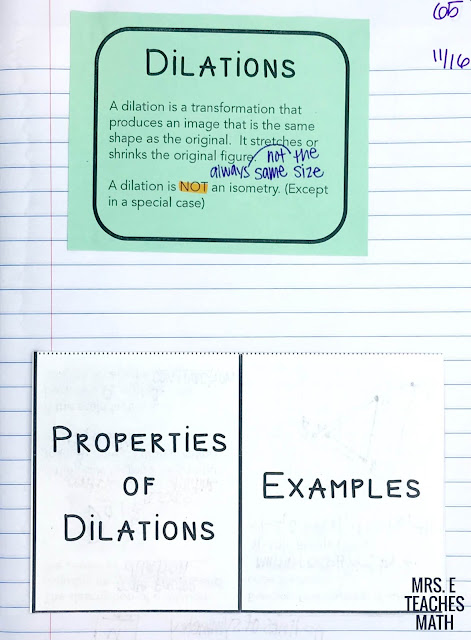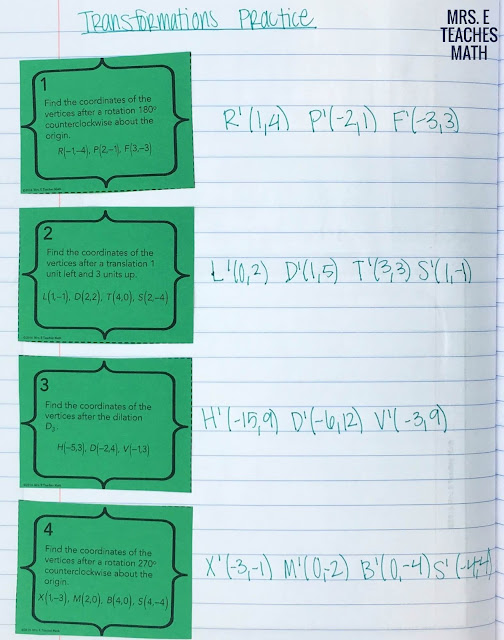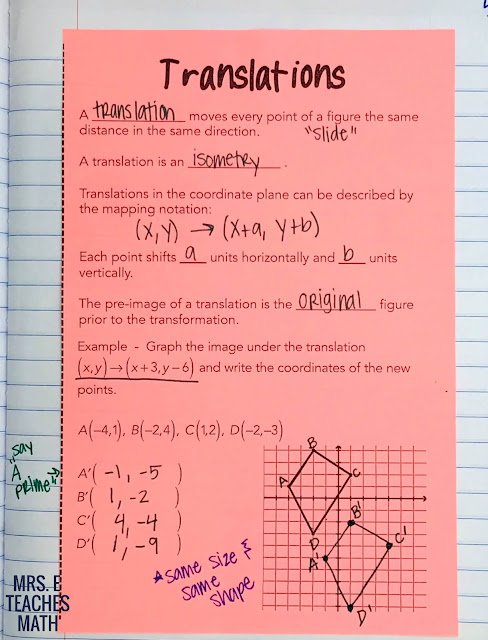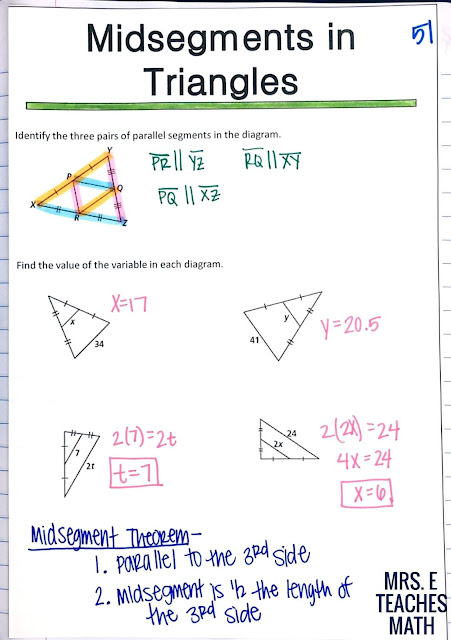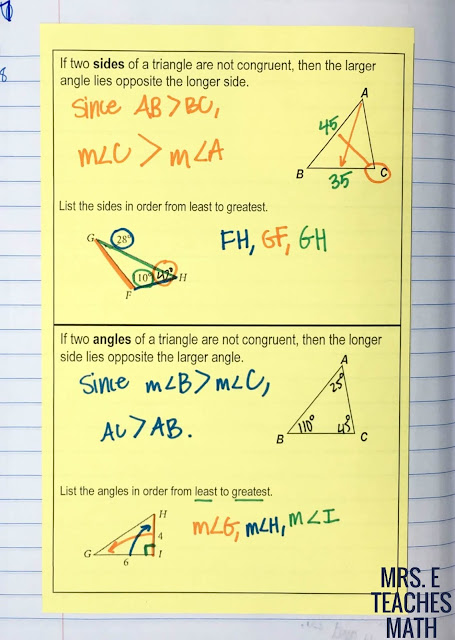The last couple of lessons for my Transformations unit were dilations and symmetry.
For dilations, I used my dilations foldable. I gave students the small page with the vocab and definitions that they glued at the top of the page. This foldable separates the properties and the examples.
The examples flap has two examples - an expansion and a contraction. I don’t really go into any more depth than this with my students. We will investigate it a lot more when I have them for Algebra 2 next year.
Then, we moved on to symmetry. You can download the file here. Line symmetry is not new for my students. The top of this page took like 2 minutes. Then, we talked about rotational symmetry. After talking through the first two examples, I left them to work with their partners. Then, we went over it together and I gave them the formula at the bottom of the page. Most of my students had figured it out, even if they hadn’t written it down explicitly.
The last page in their notebooks for this unit was review. I printed my transformations task cards and gave even student four. I copied them at four per page, so they printed tiny enough for their notebooks. Each student worked their problems. Then, they switched notebooks and checked their partners work. If they agreed, I double checked their answers. If they disagreed, I checked or had them as someone else for input. I LOVED using task cards this way, because I didn’t have to come up with additional examples and I already had them.


